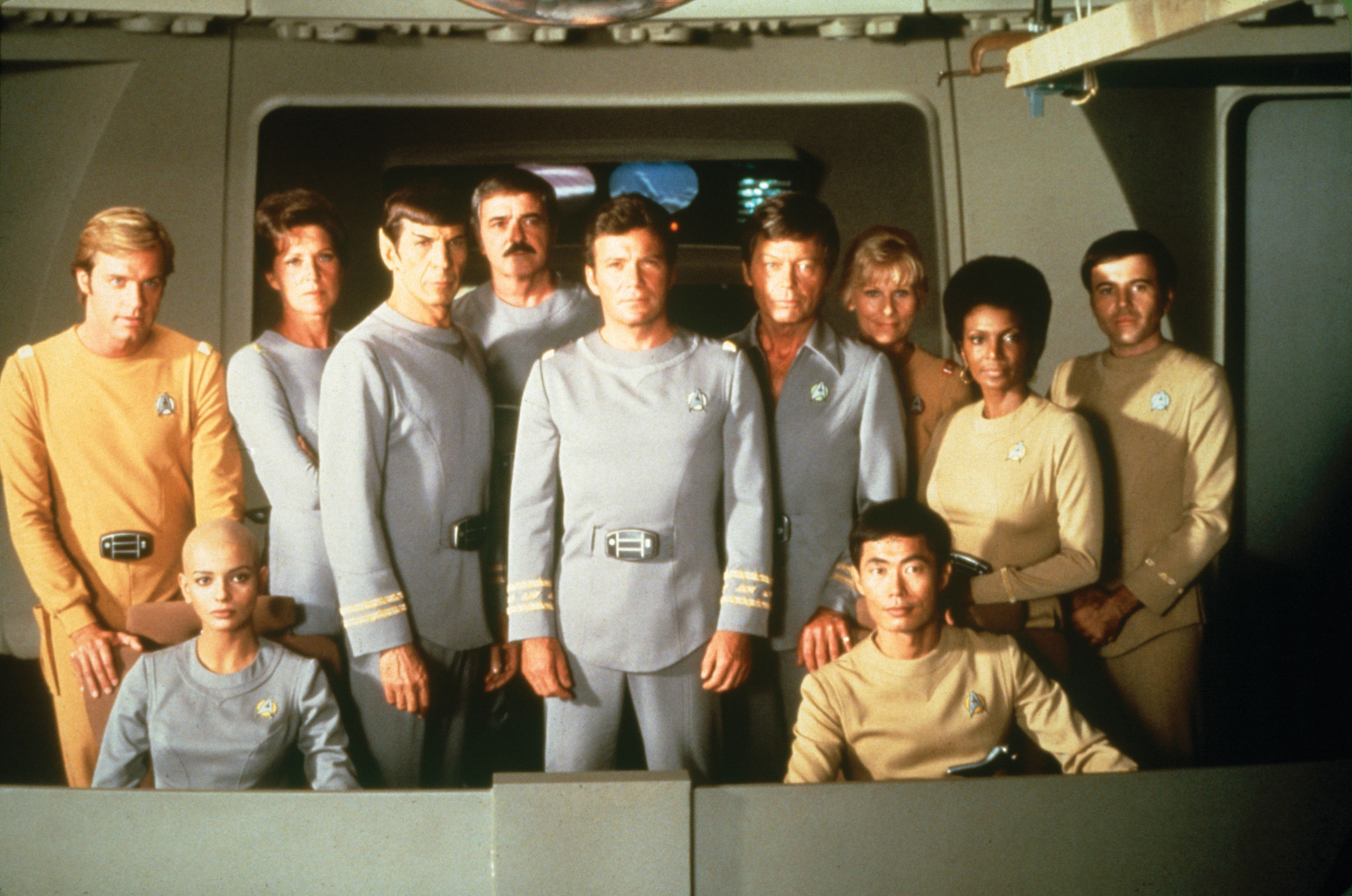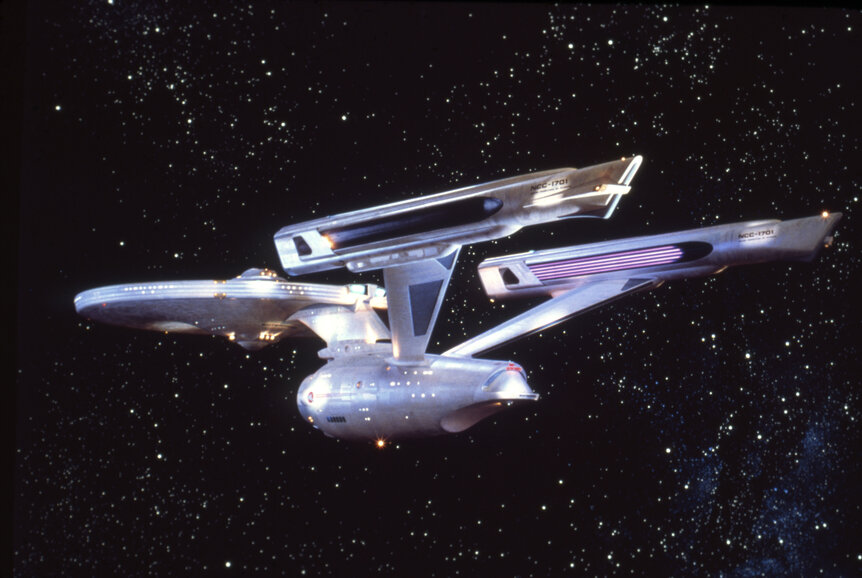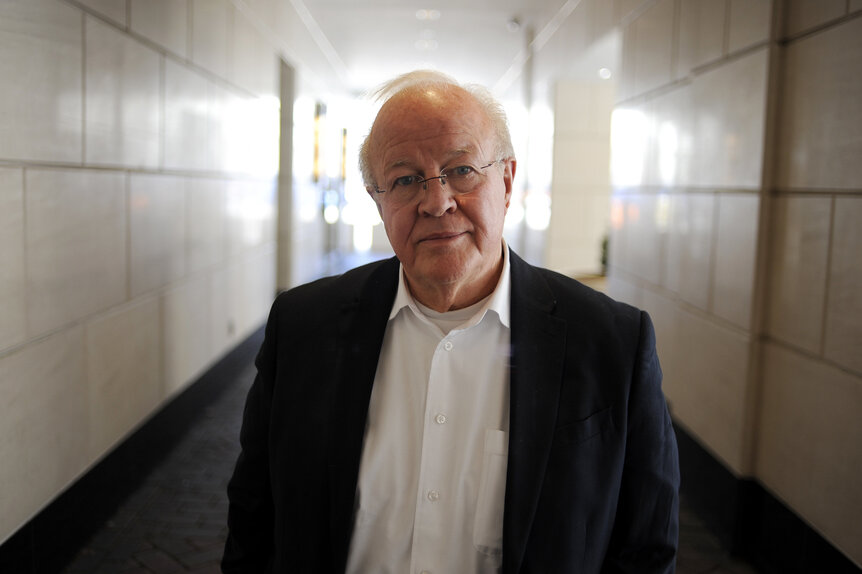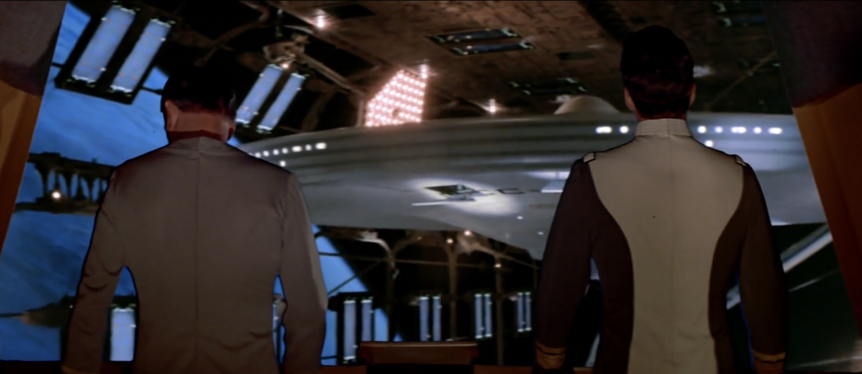Create a free profile to get unlimited access to exclusive videos, sweepstakes, and more!
40 years later, Star Trek: The Motion Picture remains a movie-making miracle

It is not hyperbole to say that when it comes to motion picture special effects, Douglas Trumbull is one of the most important names of the past 50 years.
Starting with his work on Stanley Kubrick's Academy Award-winning 2001: A Space Odyssey, Trumbull carved out a place in Hollywood as an inventive and often groundbreaking effects artist. He went on to help create the visual magic that was so essential to classics such as Steven Spielberg's Close Encounters of the Third Kind and Ridley Scott's Blade Runner. He also directed the cult classic, Silent Running. At one point, Trumbull's talents were so in-demand in Hollywood, he had to turn down George Lucas' offer to work on Star Wars.
Perhaps his most impressive achievement, though, was his visual effects work on Star Trek: The Motion Picture. The film, which revived the Star Trek franchise, is celebrating its 40th anniversary with a return to theaters. Fathom Events is bringing the film back for a theatrical bow for two days, September 15 and 18. You can find out which theaters are showing it and get tickets here.
For Trumbull, revisiting his first and only time aboard the U.S.S. Enterprise is a bit of a mixed bag. He's certainly proud of the work he and his team did on the film, and deservedly so; whatever shortcomings the film has, the Oscar-nominated visual effects were not one of them. But the initial big-screen voyage for the original Trek crew was an incredibly troubled production, as he explained during a recent conversation with SYFY WIRE.
"We knew that before we even started. We knew it was going to be a Herculean task [just to finish it], and it was going to be 24 hours a day for seven months straight," he recalls.
Trumbull actually turned down Paramount's first offer to join the film, due to a contract dispute with the studio. He used the studio's desperation to make ST: TMP to regain control of a project he intended to direct — the film that would become Brainstorm, the 1983 movie that marked Natalie Wood's final picture. "I was already under contract at Paramount at that time, but for a completely different company, doing a completely different thing. So they thought they owned me, but they actually did not, and that's where the conflict arose," Trumbull notes.
Paramount was feeling desperate, as the studio was also reportedly facing a class-action lawsuit from theater exhibitors over a then-common practice known as "blind bidding," in which studios would sell the rights to various exhibitor companies to run the film in exchange for cash money upfront. Trumbull remembers the scuttlebutt in the industry being that the studio had already collected $30 million for Star Trek. And with the film in danger of not making its Christmas season release date, the theater owners were ready to take action.
"The exhibitors who had paid in advance had banded together to get ready to file a class-action lawsuit against Paramount Pictures, to actually prohibit blind bidding in the future. So there was a lot at stake, and a lot at stake for the industry as a whole," he says. "Paramount decided to just make sure there was no chance at all that this movie wouldn't get finished on time."
That meant basically writing a blank check, which helped balloon the film's budget to $46 million, making it the most expensive film ever made at that point.
Once he came on board, Trumbull was shocked by the shape the film was in. Millions of dollars had been spent by the original visual effects company with the intent to use then-nascent computer technology to create effects, with little to show for it. The film veteran felt much of the footage that had been shot was unusable. "The live-action material that they shot was so poorly done that I felt it was unsalvageable, that not all the special effects in the world could fix these shots," he says.
One scene in particular, the memorable Spock spacewalk sequence, was especially problematic. The way it was originally shot, it involved Spock, Kirk, and several other characters, and Trumbull says it simply didn't work.
"It was a wire shot. They built a set that looked like just a set. It didn't look like an alien place at all," Trumbull says. "It just looked [like] not very good production design, not very good lighting, and not very good wire-work. And it didn't look weightless at all, and I felt that the whole sequence had to be abandoned and reinvented."
Trumbull took matters into his own hands and came up with his own version of that scene, which involved only using Leonard Nimoy's Spock. It was a bold move for a visual effects guy, but fortunately, he had worked with director Robert Wise on The Andromeda Strain. The Oscar-winning filmmaker clearly trusted his VFX supervisor.
"It was a very big leap of faith on the part of Bob Wise, to actually entrust me to take over directing that sequence," Trumbull admits. "But we had worked before. We knew each other pretty well, and he trusted me to go ahead, take it over and do it."
Perhaps the signature moment in Star Trek: The Motion Picture, and one that Trumbull is particularly proud of, is the majestic sequence in which the audience is introduced to the refitted Enterprise in Spacedock, accompanied by Jerry Goldsmith's legendary score. "We put that together pretty much from scratch," Trumbull says, adding that a special periscope lens had to be built to properly photograph the scene. "When I arrived, the Enterprise miniature [about 8-9 feet long] had been built and the dry-dock set miniature had been built. And I didn't agree with any of the techniques that the previous company, Bob Abel's company, was planning to use, to photograph that.
"And I didn't like the way the Enterprise miniature was detailed," he continues. "So I asked some hard questions of everyone, and I said, 'We have to figure out how to shoot this much more quickly, but the Enterprise itself must be stunningly beautiful, much far superior to anything that had ever been seen in the television series.' We completely rebuilt it from inside and out, using the same shape and the same design."
Trumbull and his team also had to rebuild all the lighting and repaint the Enterprise miniature to justify why Kirk and Scotty could view the ship in deep space with no nearby light sources.
"We re-designed the dry dock lighting so that we could shoot it all one pass and pull of mattes and superimpose it in front of the sky, and the earth, and things like that," Trumbull recalls. "I directed that whole sequence with Bob's permission, and he directed the live-action photography of Kirk and Scotty in the shuttle pod. But we had to discuss the sequence of shots so we could coordinate making sure the shadows and reflections playing across [James Doohan] and Shatner would look right. So we coordinated that together, and it came out just fine."
Trumbull's team also made a little bit of film history in that scene. The over-the-shoulder shot in which Scotty and Kirk have their back to the audience as they approach the ship was an almost-impossible shot to pull off in 1979. "We did that on a blue screen. And at that point in history, I don't think anybody had ever done a 65-millimeter blue screen shot to my knowledge, so that was a little tricky, but we did it," Trumbull says.
This was right on the cusp of a new era in film visual effects when emerging companies such as Industrial Light & Magic were transitioning from optical and motion control techniques to computer technology. The ambitious effects work in ST: TMP was pushing the envelope as far as it could go, which resulted in one of the most stressful post-productions of Trumbull's career. He even confirms the stories that prints of the movie were being shipped out to theaters with no time to spare.
"It was a really close call," he says now. "That was probably one of the biggest close calls in movie history, where all the reels of film were coming out of the lab, and there was one final reel that wasn't quite finished yet, and it was wet film shipped to the theaters at the last minute."
Even though his only time aboard the Enterprise was so stressful it literally put him in the hospital for weeks with ulcers after it was finally completed, Trumbull is happy with his place in Trek lore. In fact, this summer he attended his first Trek convention in Las Vegas.
How was it? "It was really fun, charming, and very sweet, actually," he says. "[Trek fans] are really wonderful, charming, loving people, so that's what I took away from it, was just how delightful the whole thing was."





























